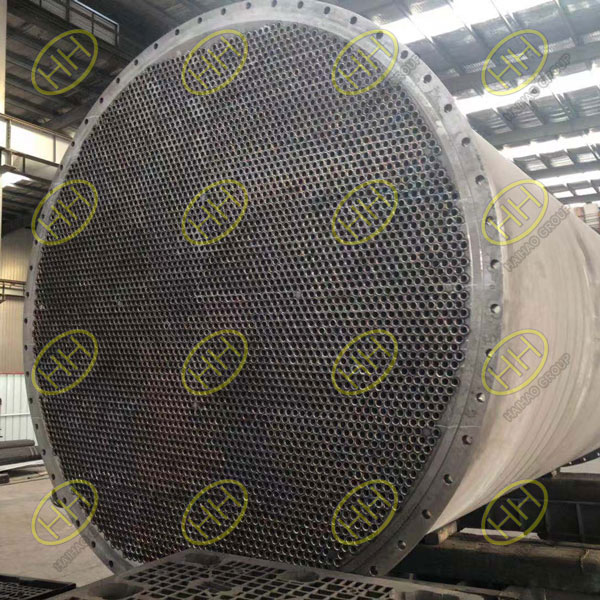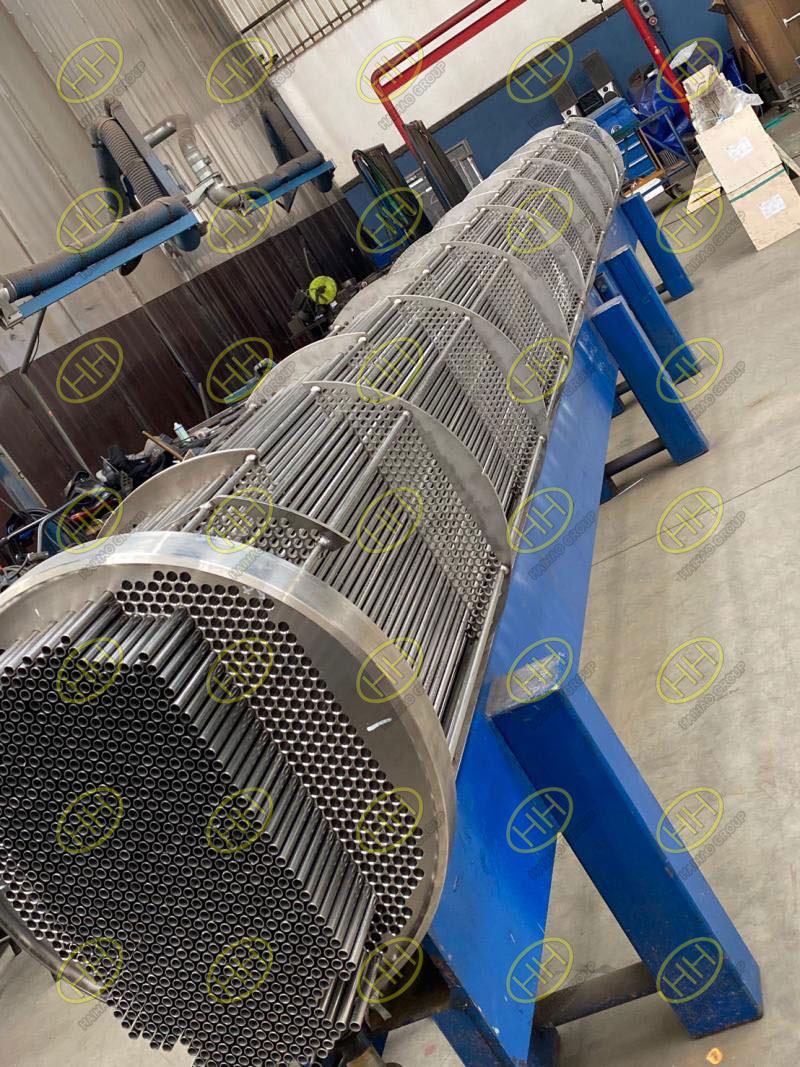Important considerations for disassembling heat exchanger
When disassembling a heat exchanger, there are several important considerations to ensure the process is safe, efficient, and does not damage the equipment. Here are some key points:
Measure and Record the Tightening Length: Before disassembling the heat exchanger plates, it is critical to measure the compressed length of the plate bundle and record the dimension. This measurement will be essential when reassembling the plates, ensuring they are installed back to their original compression length.
Handle Seals Carefully: When removing seals stuck between the plates’ grooves, use a screwdriver gently to separate them. Start from a point that is easy to peel off and work your way around the perimeter. Avoid damaging both the plates and the seals during this process.
Cleaning the Seal Grooves: When replacing old seals, it’s important to clean the grooves using acetone or other suitable solvents. After cleaning, apply a layer of synthetic resin adhesive evenly inside the grooves with a brush before installing new seals.
Check for Perforations: To check the heat exchanger plates for any perforations, it is recommended to use a magnifying glass with at least five times magnification. You may also use light or kerosene penetration tests for a more detailed inspection.
Cleaning the Filter: If any debris accumulates in the inlet/outlet short pipes or channels, it may indicate that the filter has failed. In such cases, it is necessary to clean the system promptly.
Cleaning Methods for Heat Exchanger Plates: There are three main methods for cleaning heat exchanger plates:
Backflushing (without disassembly): Suitable for cases where surface dirt or contaminants are easy to flush.
Manual Cleaning (disassembly required): Use pressurized water (0.1–0.2 MPa) or low-pressure steam to rinse the plates. For tough sediment, a soft brush can be used to scrub the surface.
Chemical Cleaning: For hard deposits like oxides or carbides that cannot be removed by mechanical cleaning, chemical solvents are applied depending on the material of the plates.
Avoid Using Abrasive Brushes: Never use steel wire brushes on stainless steel plates to avoid accelerating corrosion. If rust or stains are present, use a suitable decontamination powder to remove them.
Water Quality for Cleaning: Ensure that the water used for cleaning is free from salt, sulfur, or other harmful components that could cause damage to the plates.
Post-Chemical Cleaning: After using chemical cleaning methods, thoroughly rinse the plates with clean water. Use fine cloth to dry the plates and store them in a clean environment for future use.
Handling Titanium Plates: If disassembling titanium plates, make sure there is no contact with open flames to prevent oxidation.
Seal Inspection: Inspect seals for signs of aging, degradation, or cracks. Never use hard objects to scratch the surface of the seals, as this could cause damage.
Avoid Solid Particles on Plates and Seals: Ensure that no solid particles like sand or iron slag accumulate in the grooves of the plates or seals during assembly or disassembly.
Check for Deformation: Inspect the heat exchanger plates for any local deformations. If they exceed allowable limits, they should be repaired or replaced.
By considering these important aspects, you can ensure that the disassembly of a heat exchanger is performed safely, efficiently, and with minimal disruption to the process system.If you want to know more about it,please feel free to contact us: Email:sales@haihaogroup.com


